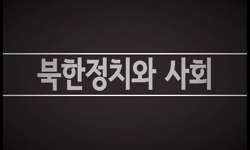Totalitarianism seeks to maintain the absolute and oppressive single-party government that subordinate all aspects of the individual’s life to the authority of the government. The totalitarian system built on terror and ideology is inseparable with ...
http://chineseinput.net/에서 pinyin(병음)방식으로 중국어를 변환할 수 있습니다.
변환된 중국어를 복사하여 사용하시면 됩니다.
- 中文 을 입력하시려면 zhongwen을 입력하시고 space를누르시면됩니다.
- 北京 을 입력하시려면 beijing을 입력하시고 space를 누르시면 됩니다.
https://www.riss.kr/link?id=A104252137
-
저자
정천구 (서울디지털대학교)

- 발행기관
- 학술지명
- 권호사항
-
발행연도
2011
-
작성언어
Korean
-
주제어
totalitarianism ; concentration camp ; Nazi Germany ; gulag ; North Korea ; Big Brother ; Mao Zedong ; Killing Field ; Arendt ; Brzezinski ; slavery system. ; 전체주의 ; 강제수용소 ; 나치독일 ; 굴락 ; 북한 ; 빅브라더 ; 마오쩌둥 ; 킬링필드 ; 아렌트 ; 브레진스키 ; 노예제도 ; totalitarianism ; concentration camp ; Nazi Germany ; gulag ; North Korea ; Big Brother ; Mao Zedong ; Killing Field ; Arendt ; Brzezinski ; slavery system.
-
등재정보
KCI등재후보
-
자료형태
학술저널
- 발행기관 URL
-
수록면
47-81(35쪽)
-
KCI 피인용횟수
7
- 제공처
-
0
상세조회 -
0
다운로드
부가정보
다국어 초록 (Multilingual Abstract)
Totalitarianism seeks to maintain the absolute and oppressive single-party government that subordinate all aspects of the individual’s life to the authority of the government. The totalitarian system built on terror and ideology is inseparable with concentration camp. Nazi Germany and Stalinist were regarded as the two totalitarian models for they maintained large scale concentration camps in common. Totalitarian model is still useful as a ideal-type for the study of de-totalitarian precess of the systems. Totalitarian terror is distinguish from that of dictators and tyrannies in that the latter has been used against their visible political opponents whereas the former is used against not only their visible opponents but also non visible and potential enemies. Some suggested that any totalitarian system has six characteristics: an official ideology, a single mass party, a technologically conditioned near-complete monopoly of all means of effective armed combat and of effective mass communication, and a system of terroristic police control. The core principle of totalitarianism is an attempt to effect a total social revolution, including the conditioning of man, on the basis of certain arbitrary ideological assumptions proclaimed by the leadership, in an atmosphere of coerced unanimity of the entire population. Totalitarian system not only seeks to thought control but also compels love for the leader and hate for those identified as his enemies, In the system, role of leader(Big Brother) who represents the totalitarian evil is very important. In Nazi Germany as well as in Stalinist Soviet Union and in Mao's China, when Big Brother died the nightmare of the totalitarian system vanished and drastically transformed into another system. North Korea has almost all the totalitarian characteristics including concentration camps and its survival seems to depend on Big Brother Kim Jong-Il. During the 20th century, lots of people sacrificed in the totalitarian movements throughout the world. In order to liquidate the remaining totalitarian systems and to prevent recurrence of totalitarianism, restoration of genuine politics and development and diffusion of democracy throughout the world is essential.
국문 초록 (Abstract)
사회의 총체적 지배를 추구하는 전체주의체제는 테러기구인 강제수용소와 불가분의 관계에 있다. 나치독일과 함께 스탈린의 소련이 전체주의체제의 모델이 된 것은 두 정치체제가 대규모...
사회의 총체적 지배를 추구하는 전체주의체제는 테러기구인 강제수용소와 불가분의 관계에 있다. 나치독일과 함께 스탈린의 소련이 전체주의체제의 모델이 된 것은 두 정치체제가 대규모의 강제수용소를 운영하고 있다는 공통점을 가지고 있기 때문이다. 전체주의 모델은 냉전이 끝난 후에도 탈(脫)전체주의화 과정의 연구를 위한 이념형으로서 중요하다. 전체주의는 테러와 이데올로기의 허구 위에 건설된 완전히 다른 형태의 정치체제이다. 과거의 독재자나 참주는 정권유지를 위한 수단으로 테러를 행했지만 전체주의의 테러는 상시적이고 인간성 자체를 파괴하는 것으로 질적으로 구별된다. 그 동안 전체주의는 ① 단일 이데올로기 ② 유일 영도자 지도의 단일정당 ③ 당과 비밀경찰의 통제에 의한 테러체계 ④ 의사소통수단의 독점 ⑤ 무력의 독점 그리고 ⑥ 중앙통제경제 등 여섯 가지 특성으로 제시되었다. 그러나 전체주의의 핵심은 새로운 인간형의 실현과 더불어 기존의 지배적인 가치를 완전히 대체할 새로운 가치체계를 사회적 저항을 돌파하여 관철시킴으로써 형성된다. 6가지 특성의 존재여부에 관계없이 이러한 핵심원리가 관철된 체제는 전체주의국가이다. 전체주의 국가는 사상통제만이 아니라 지도자를 사랑하도록 그리고 적으로 규정된 자들을 증오하도록 강제한다. 이러한 전체주의 악을 대표하는 빅브라더, 즉 지도자의 역할은 매우 중요하다. 나치독일, 스탈린체제, 마오쩌둥 체제 등에서 빅브라더의 사망은 곧 체제의 급격한 변화로 이어졌다. 북한은 강제수용소를 비롯한 전체주의의 특성들을 공유한 전체주의 사회이며 빅브라더인 김정일의 존재와 밀접히 관련되어 있다. 20세기 100년 동안 전체주의 운동으로 수천 만 명의 인명이 희생되었다. 남아있는 전체주의를 청산하고 이러한 불행의 재발을 막는 길은 공동체의 과제들을 대화와 소통으로 합의를 통해 해결해 나가는 진정한 의미의 정치가 복원되고, 권력의 제한과 인권의 존중을 바탕으로 하는 민주주의의 발전과 확산이 이루어지는 일이다.
참고문헌 (Reference)
1 홍준기, "홀로코스트와 전체주의 분석: 아감벤 철학과 라깡 정신분석을 중심으로" 한국라깡과현대정신분석학회 10 (10): 7-34, 2008
2 이현경, "테러의 본질과 한국의 대테러 방향" 3 (3): 2003
3 윤황, "제5장 북한 인권정책과 정치범 수용소 실태 분석" 5 (5): 2005
4 우정, "제4장 북한 인권의 현실성과 문제점" 8 : 2005
5 정천구, "제1장 북한문제의 성격과 한국 통일전략의 방향 - 인식의 코페르니쿠스적 대전환 -" 한국통일전략학회 10 (10): 9-44, 2010
6 정경환, "제1장 북한 인권문제의 기본성격과 실체적 대응" 5 (5): 2005
7 박혜영, "아이히만-악의 평범성" 22 : 2007
8 김남섭, "스탈린 시대의 소련 강제수용소 연구: 수감자들을 둘러싼 수용소 내의 사회적 관계를 중심으로" 역사학회 22 (22): 295-331, 2009
9 김경호, "북한의 통치이데올로기와 그 변용" 2 (2): 2002
10 김연각, "북한 국가의 성격: 기존 논의의 검토와 제언" 북한연구학회 10 (10): 89-113, 2006
1 홍준기, "홀로코스트와 전체주의 분석: 아감벤 철학과 라깡 정신분석을 중심으로" 한국라깡과현대정신분석학회 10 (10): 7-34, 2008
2 이현경, "테러의 본질과 한국의 대테러 방향" 3 (3): 2003
3 윤황, "제5장 북한 인권정책과 정치범 수용소 실태 분석" 5 (5): 2005
4 우정, "제4장 북한 인권의 현실성과 문제점" 8 : 2005
5 정천구, "제1장 북한문제의 성격과 한국 통일전략의 방향 - 인식의 코페르니쿠스적 대전환 -" 한국통일전략학회 10 (10): 9-44, 2010
6 정경환, "제1장 북한 인권문제의 기본성격과 실체적 대응" 5 (5): 2005
7 박혜영, "아이히만-악의 평범성" 22 : 2007
8 김남섭, "스탈린 시대의 소련 강제수용소 연구: 수감자들을 둘러싼 수용소 내의 사회적 관계를 중심으로" 역사학회 22 (22): 295-331, 2009
9 김경호, "북한의 통치이데올로기와 그 변용" 2 (2): 2002
10 김연각, "북한 국가의 성격: 기존 논의의 검토와 제언" 북한연구학회 10 (10): 89-113, 2006
11 이국영, "독일의 동태적 전체주의론: 마틴 드라트와 마틴 예니케를 중심으로" 한국유럽학회 26 (26): 31-54, 2008
12 Brzezinski, Zbigniew, "Totalitarianism and Rationality" 50 (50): 754-, 1956
13 Walicki, Andrzej, "Totalitarianism and Detotalitarization: The Case of Poland" 58 (58): 1996
14 Gurian, Waldemar, "The Totalitarian State" 40 (40): 1978
15 Arendt, Hannah, "The Origins of Totalitarianism, 2nd enlarged edition" Meridian Books, The World Publishing Company 1958
16 Seibel, Wolfgang, "The Order of Terror: The Concentration Camp by Wolfgang Sofsky" 103 (103): 1998
17 Arendt, Hannah, "Social Science Techniques and the Study of Concentration Camps" 12 (12): 1950
18 Tucker, Robert C., "Ideas: Orwell's 1984: Does Big Brother Really Exist" 8 (8): 1984
19 Adler, H. G., "Ideas Toward a Sociology of the Concentration Camp" 63 (63): 1958
20 Rummel, R. J., "Democracy, Power, Genocide, and Mass Murder" 39 (39): 1995
21 이상우, "21세기 국제질서: 현실주의적 전망" 신아시아연구소 12 (12): 5-26, 2005
22 죠지 오웰, "1984년" 신영출판사 1984
동일학술지(권/호) 다른 논문
-
- 한국통일전략학회
- 박찬석
- 2011
- KCI등재후보
-
제8장 통일 이후 베트남의 지식재산권 침해에 대한 일고찰
- 한국통일전략학회
- 이원근
- 2011
- KCI등재후보
-
- 한국통일전략학회
- 박광득
- 2011
- KCI등재후보
-
제6장 세습과정에서 본 북한 통치이데올로기의 변화 연구
- 한국통일전략학회
- 양정훈
- 2011
- KCI등재후보
분석정보
인용정보 인용지수 설명보기
학술지 이력
| 연월일 | 이력구분 | 이력상세 | 등재구분 |
|---|---|---|---|
| 2022 | 평가예정 | 재인증평가 신청대상 (재인증) | |
| 2019-01-01 | 평가 | 등재학술지 선정 (계속평가) |  |
| 2018-12-01 | 평가 | 등재후보로 하락 (계속평가) |  |
| 2015-01-01 | 평가 | 등재학술지 선정 (계속평가) |  |
| 2014-01-01 | 평가 | 등재후보학술지 유지 (계속평가) |  |
| 2013-01-01 | 평가 | 등재후보 1차 PASS (등재후보1차) |  |
| 2012-01-01 | 평가 | 등재후보 1차 FAIL (등재후보1차) |  |
| 2011-01-01 | 평가 | 등재후보학술지 유지 (등재후보2차) |  |
| 2010-01-01 | 평가 | 등재후보 1차 PASS (등재후보1차) |  |
| 2009-01-01 | 평가 | 등재후보학술지 유지 (등재후보1차) |  |
| 2008-01-01 | 평가 | 등재후보 1차 FAIL (등재후보1차) |  |
| 2006-01-01 | 평가 | 등재후보학술지 선정 (신규평가) |  |
학술지 인용정보
| 기준연도 | WOS-KCI 통합IF(2년) | KCIF(2년) | KCIF(3년) |
|---|---|---|---|
| 2016 | 1.75 | 1.75 | 1.44 |
| KCIF(4년) | KCIF(5년) | 중심성지수(3년) | 즉시성지수 |
| 1.22 | 1.05 | 1.054 | 0.53 |





 스콜라
스콜라






